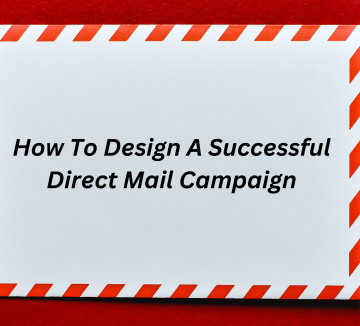Last Updated on April 6, 2023 by David
Email marketing strategies are essential for businesses that want to reach their target audience and drive sales through email campaigns.
With the right email marketing strategies in place, businesses can create engaging and effective campaigns that generate leads and build brand awareness.
Some popular email marketing strategies include building a strong email list, segmenting subscribers, personalizing content, and automating campaigns.
Email marketing is essential for any business that wants to establish a strong relationship with its customers, boost engagement, and ultimately increase conversions.
It is one of the most effective ways to communicate directly with your target audience and provide them with valuable content, offers, and promotions.
However, more than sending out a few emails is needed to get the desired results. You need to employ effective email marketing techniques to help you succeed in your email campaigns.
In this article, we will explore 10 proven email marketing techniques that can help small businesses, e-commerce websites, and lead generation campaigns achieve success.
You may also like:
- Ultimate Guide To Email Marketing
- How User Generated Content (UGC) Help Businesses
- Affiliate Marketing Business Ideas
But first, why even bother to send emails?
Importance of Email Marketing:
Email marketing is a powerful tool for businesses that want to build a strong relationships with their customers and drive sales.
It allows businesses to communicate directly with their target audience, providing them with valuable content, offers, and promotions.
Email marketing is an effective way to reach many people at once and can be personalized to suit the interests and preferences of individual subscribers.
Effective email marketing techniques can help businesses increase open and click-through rates, generate leads and increase conversions.
In addition, email marketing can also improve customer engagement and loyalty, enhance brand reputation, and provide valuable insights into customer behavior and preferences.
Top 10 Email Marketing Strategies
1. Email List Building
An email list is a collection of email addresses that have been voluntarily provided by individuals interested in receiving updates and promotions from a business.
Creating an email list is important because it allows businesses to reach interested individuals and build relationships with potential customers directly.
Here are important strategies you will want to consider to build an effective email list.
- Defining Your Target Audience:
The first step in building a strong email list is to create a target audience.
This involves identifying your ideal customer’s demographics, interests, and preferences.
By understanding your target audience, you can tailor your email marketing campaigns to meet their needs and interests.
This will help you achieve better engagement and ultimately lead to increased conversions.
- Creating an Effective Signup Form:
An effective signup form is essential for building a strong email list. It should be easy to find on your website, concise, and compelling.
Besides, it should also include a clear call-to-action that tells visitors what they can expect to receive from your emails.
In addition, your call-to-action should be relevant to your audience and be a valuable offer that encourages them to subscribe.
- Integrating Signup Forms Across Platforms:
Integrating signup forms across different platforms, such as social media, your website, and landing pages, can help you reach a larger audience and build your email list faster.
Your signup forms should be consistent across all platforms, making it easy for visitors to subscribe.
- Implementing Double Opt-In Process:
Implementing a double opt-in process can help ensure your email list is high-quality, and your subscribers are genuinely interested in your content.
This involves sending a confirmation email to new subscribers, asking them to confirm their subscription before receiving your emails.
Using a double opt-in process will ensure that your email list is not filled with fake or inactive email addresses, reducing the likelihood of your emails being marked as spam.
2. Personalize Your Email Campaigns
Email personalization is tailoring your emails to specific subscribers based on their interests, behavior, and preferences.
By creating personalized emails, you can increase engagement and conversions from your subscribers.
Ideally, personalization is key to building strong relationships with customers and increasing engagement.
Personalization involves tailoring your content to the interests and preferences of individual subscribers, making them feel valued and appreciated. Personalization can help you achieve better open and click-through rates and more sales.
Here are the techniques for creating personalized emails.
- Creating Personalized Content:
Creating personalized content involves using subscriber data, such as their name, location, and past purchase history, to create targeted and relevant content.
This can include personalized recommendations, exclusive offers, and customized promotions.
By creating personalized content, you will make your subscribers feel that you understand their needs and preferences, increasing the chances of them engaging with your content and ultimately making a purchase.
- Dynamic Content Personalization:
Dynamic content personalization involves using real-time data to personalize the content of your emails.
This can include product recommendations, pricing, and content based on the subscriber’s behavior and preferences.
For example, if a subscriber abandons their cart, you can use dynamic content personalization to email them personalized product recommendations based on their browsing history.
This can increase the likelihood of them returning to complete their purchase.
- Behavioral Personalization:
Behavioral personalization involves using data on the subscriber’s behavior, such as their click-through rate and purchase history, to personalize the content of your emails.
This can include abandoned cart reminders, product recommendations, and special offers.
By using behavioral personalization, you can create highly targeted and relevant content that is more likely to resonate with your subscribers, leading to increased engagement and conversions.
3. Follow Email Segmentation Best Practices
Segmentation involves dividing your email list into smaller groups based on demographics, behavior, and engagement.
Proper email segmentation allows you to create more targeted and relevant content for your subscribers, increasing the effectiveness of your email marketing campaigns.
Segmentation can help you achieve better open and click-through rates and more sales.
- Segmenting by Demographics:
Segmenting by demographics involves dividing your email list based on factors such as age, gender, location, and income.
This allows you to create targeted content that is more likely to resonate with specific groups of subscribers.
For example, if you are an e-commerce website selling women’s clothing, you may want to segment your list by gender and create targeted content for your female subscribers.
- Segmenting by Behavior:
Segmenting by behavior involves dividing your email list based on the subscriber’s behavior, such as click-through rate and purchase history.
This allows you to create targeted content for subscribers who have shown a specific interest in your products or services.
For example, if a subscriber has clicked on a specific product category on your website, you may want to segment them into a group and send them targeted content related to that category.
- Segmenting by Email Engagement:
Segmenting by email engagement involves dividing your email list based on the subscriber’s level of engagement with your emails.
This can include subscribers who have opened or clicked on your emails and those who have not engaged with your emails for a specific period. By segmenting your list based on email engagement, you can create targeted content for each group, increasing their chances of engaging with your content and purchasing.
4. Email A/B Testing
Email A/B testing, also known as email split testing, involves testing two different versions of an email to see which one performs better.
This can include testing email content, subject lines, and call-to-actions. A/B testing is essential for optimizing email marketing campaigns and achieving better results.
Here are important Email Split Testing Techniques
- A/B Testing Email Content:
A/B testing email content involves testing different versions of your email content to see which one performs better.
This can include testing different headlines, body copy, and images.
By testing different versions of your content, you can determine what resonates with your subscribers and optimize your content for better engagement and conversions.
- A/B Testing Email Subject Lines:
A/B testing email subject lines involves testing different versions of your subject line to see which performs better.
Your subject line is the first thing your subscribers will see, so it is important to make it compelling and relevant.
Testing different subject lines allows you to determine what works best for your audience and increase your open rates.
- A/B Testing Call-to-Actions:
A/B testing call-to-action involves testing different versions of your call-to-action to see which performs better.
Your call-to-action is the most important element of your email, as it tells your subscribers what you want them to do.
By testing different call-to-actions, you can determine what motivates your subscribers to take action and optimize your calls-to-action for better conversions.
Here are some of the A/B testing tools available today include:
5. Email Marketing Automation
Email automation involves using software to automate your email marketing campaigns, such as sending welcome emails, abandoned cart emails, and re-engagement emails.
Automation can help you save time, improve your targeting, and increase ROI. Here are unique email marketing automation techniques.
- Automated Welcome Series
An automated welcome series involves sending a series of emails to new subscribers to introduce them to your brand and products.
This can include a welcome email, an introduction to your brand, and a special offer.
By sending a welcome series, you can increase engagement and conversions from new subscribers.
- Automated Abandoned Cart Emails:
An automated abandoned cart email is sent to subscribers who have added items to their cart but still need to complete their purchase.
This email can include personalized product recommendations and a call-to-action to complete their purchase. You can recover lost sales and increase your revenue by using abandoned cart emails.
- Automated Re-engagement Emails:
An automated re-engagement email is sent to a subscriber who has not engaged with your emails for a specific period of time.
This email can include a special offer or personalized content to encourage the subscriber to engage with your emails again.
By using re-engagement emails, you can maintain a healthy email list and increase engagement from inactive subscribers.
6. Proper Timing and Frequency
Timing and frequency are critical factors in the success of your email marketing campaigns.
Sending emails at the right time and frequency can help you achieve better engagement and conversions while sending too many emails or at the wrong time can result in unsubscribes and lower engagement.
Therefore, bear the following in mind when it comes to ensuring proper timing and frequency:
- Finding the Best Time to Send Emails:
Finding the best time to send your emails involves testing different send times to determine when your subscribers will most likely engage with your content.
This can vary depending on your target audience and the content you are sending.
- Finding the Optimal Email Frequency:
Finding the optimal email frequency involves testing different send frequencies to determine how often your subscribers want to receive your emails.
This can vary depending on your target audience and the type of content you are sending.
- Creating a Consistent Schedule:
Creating a consistent email schedule involves sending emails regularly, such as once weekly or monthly.
This can help you build trust and establish a relationship with your subscribers, increasing the likelihood of them engaging with your content and making a purchase.
7. Mobile Optimization Techniques
Mobile optimization involves optimizing your emails for mobile devices like smartphones and tablets.
With more than half of all emails being opened on mobile devices, it is essential to optimize your emails for this platform to ensure that your content is easy to read and engage with.
- Creating Responsive Emails:
Creating responsive emails involves using a responsive design that adjusts to fit the screen size of your subscribers’ devices.
This can ensure that your emails look great on any device, increasing the likelihood of engagement and conversions.
- Optimizing Email Content for Mobile:
Optimizing your email content for mobile involves using short paragraphs, clear headlines, and concise copy that is easy to read on a small screen.
You should also ensure that your images are optimized for mobile and that your calls-to-action are prominent and easy to click.
- Testing Emails on Multiple Devices:
Testing your emails on multiple devices involves sending test emails to different devices and checking to ensure that your emails look great and are easy to read on all devices.
This can help you identify issues and ensure your emails are optimized for all devices.
8. Improving Email Visual Appeal
Visual appeal is an important aspect of email marketing, as it can help you grab your subscriber’s attention and increase engagement.
Creating visually appealing emails can also help you establish your brand identity and improve your email marketing strategy.
- Creating Eye-Catching Designs:
Creating eye-catching designs involves using graphics, images, and colors that are visually appealing and consistent with your brand identity.
Your design should be clean and uncluttered, making it easy for subscribers to read and engage with your content.
- Optimizing Images and Videos:
Optimizing your images and videos involves using high-quality images and videos that load quickly and are optimized for mobile devices.
This can help you increase engagement and conversions by making your content more visually appealing and easier to consume.
- Creating Interactive Emails:
Creating interactive emails involves using interactive elements, such as quizzes, polls, and games, to engage your subscribers and increase their time spent on your email.
This can help you increase engagement and conversions by making your content more interactive and fun.
9. Optimizing Call-to-Actions
Call-to-actions are critical elements of your email marketing campaigns, as they tell your subscribers what you want them to do.
Creating effective call-to-actions can help you increase engagement and conversions by making it easy for your subscribers to take action.
- Creating Effective CTAs:
Creating effective CTAs involves using clear and compelling language that tells your subscribers what they can expect when they take action.
Your CTA should be prominent and easy to click on, and it should be relevant to the content of your email.
- Optimizing CTA Placement:
Optimizing CTA placement involves placing your call-to-action in a prominent location, such as at the top or bottom of your email.
You should also consider placing your CTA in multiple locations within your email to increase the likelihood of engagement and conversions.
- A/B Testing CTAs:
A/B testing CTAs involves testing different versions of your call-to-action to determine what works best for your audience.
This can include testing different languages, colors, and placement. By testing different CTAs, you can optimize your email marketing campaigns for better engagement and conversions.
10: Adjust Email Marketing Strategies Accordingly
Analytics and metrics are critical for measuring the success of your email marketing campaigns.
By tracking key metrics, you can identify areas for improvement and adjust your strategy to achieve better results.
- Key Metrics to Track:
Key metrics to track include open rate, click-through rate, conversion rate, bounce rate, and unsubscribe rate.
By tracking these metrics, you can identify areas for improvement and adjust your email marketing strategy accordingly.
- Tracking and Analyzing Results:
Tracking and analyzing your results involves using analytics tools to monitor the performance of your email marketing campaigns.
You should regularly review your metrics and adjust your strategy based on the results.
- Adjusting Email Marketing Strategies Based on Analytics:
Adjusting your strategy based on analytics involves making changes to your email marketing campaigns based on the data you have collected.
This can include changing your email content, subject lines, or call-to-actions to improve engagement and conversions.
Conclusion
In conclusion, email marketing is a powerful tool for businesses that want to build strong relationships with their customers and drive sales.
By building a strong email list, businesses can ensure that their messages are being delivered to a receptive audience.
Segmenting subscribers based on demographics, behavior, and engagement can help businesses deliver more targeted content that resonates with their audience.
Personalizing content based on subscriber data, such as name, location, and purchase history, can help businesses create more relevant and engaging emails.
In addition, automating campaigns can help businesses save time and resources while still delivering timely and effective messages.
Besides, businesses can also explore advanced techniques such as A/B testing, mobile optimization, and analytics tracking to improve their email marketing campaigns further.
With the right combination of email marketing strategies and techniques, businesses can create powerful and effective email campaigns that drive engagement, conversions, and revenue.




